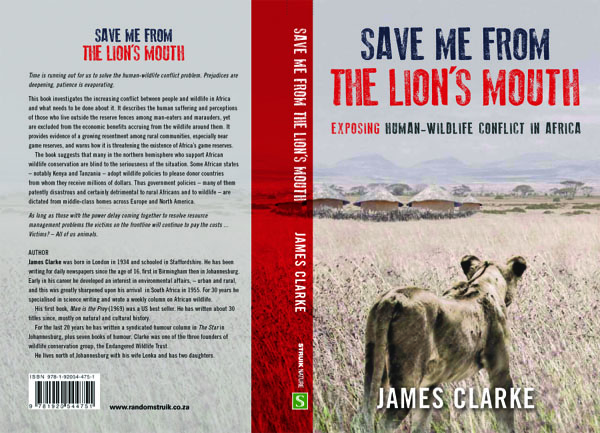Published by RandomStruik
July 2012
SECOND EDITION MARCH 2014
This book investigates the increasing conflict between people and wildlife inAfricaand what needs to be done about it. It describes how African government policies, many of them patently disastrous for rural Africans and for wildlife, are being dictated from middle class homes across Europe andAmerica.
It describes the human suffering and perceptions of those who live outside the reserve fences among man-eaters and marauders yet are excluded from the economic benefits accruing from the wildlife around them.
It provides evidence of a growing resentment among rural communities and warns how it is threatening the existence ofAfrica’s game reserves.
The book suggests that many in the Northern Hemisphere who support African wildlife conservation are blind to the seriousness of the situation and even totally unaware of it. Some African states – notably Kenya and Tanzania– adopt wildlife policies to please donor countries from whom they receive millions of dollars rather than formulating policies to benefit people and conservation. Fortunately there is a growing international lobby that is seeking solutions.
Available from all good booksellers in South Africa
Excerpt from chapter 1 – “The Conflict”
In many parts of Africa a “front line” has developed between humans and wild animals. It began many generations ago when the colonial powers appropriated wildlife to the central authority – a policy that most African countries have seen fit to retain. To the colonial powers wildlife was a resource to be commercially exploited – like minerals. Today’s governments view it as a revenue-earning commodity via tourism and hunting. And in common with the colonialists the current authorities allow those who live among wild animals almost no part in their control so that rural communities traditionally regard wildlife as government-owned. Throughout much of Africa they pursue bush meat with a sense of guilt – this after millennia of having the right to do so. They view national parks and game reserves as places set aside exclusively for the entertainment of rich outsiders. The authorities, with few exceptions, are doing too little to alter that impression. As a result there is today something like a guerrilla war being waged by many communities along this front line. On a daily basis bands of poachers armed with AK47s cross it and invade the reserves for meat, ivory and rhino horn. Annually hundreds of poachers on the one hand and game guards on the other lose their lives in what has become an intensifying bush war. And annually vast numbers of wild animals are killed.
There have been, since 2003, some significant if sporadic moves within Africa by scientists, officials, game lodges, safari companies, politicians, community representatives and field-workers to formulate a policy to alleviate human-wildlife conflict of which the public, particularly outside Africa, is unaware. The challenge to conservationists is no longer simply a case of “saving our wildlife heritage”. By raising funds to put up fences and aiding zoological research they have done wonders – but little is being done to win the hearts and minds of those outside the reserves so that they feel safer; so that they receive compensation for the loss of livestock, crops and lives to wild animals; so that they perceive wildlife in a positive light and at least receive tangible benefits from its presence.


Hello Mister Clarke,
thanks for this book. Does your book as a printed version or the Apple Store? The book is for Uwe (my husband) http://www.serengeti-wildlife.com/ but unfortunately he has a Kindle, but I would like to see in his future work your book.
LikeLike